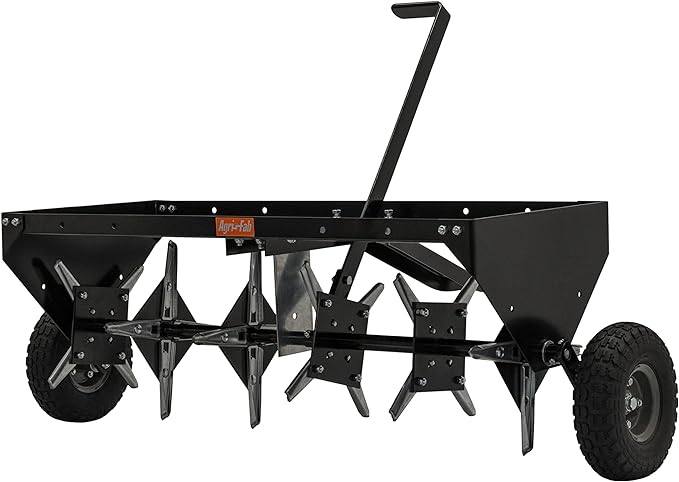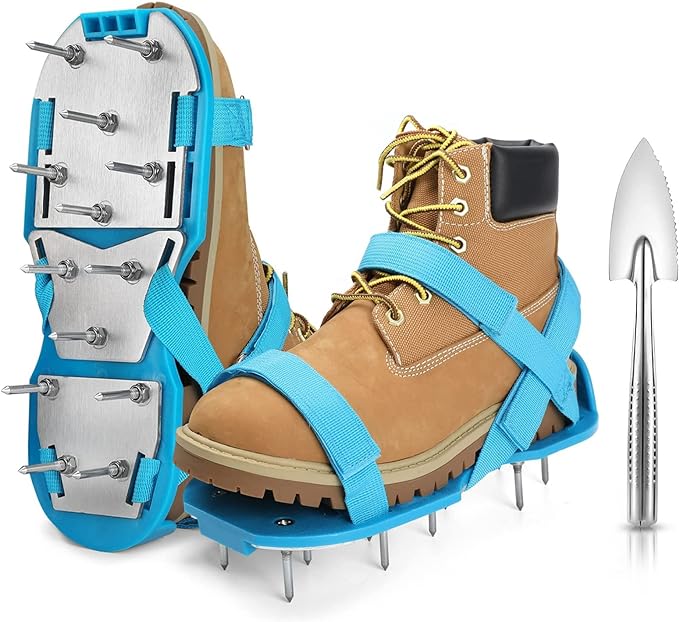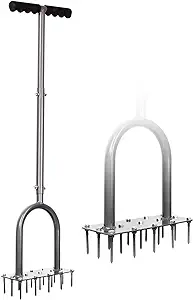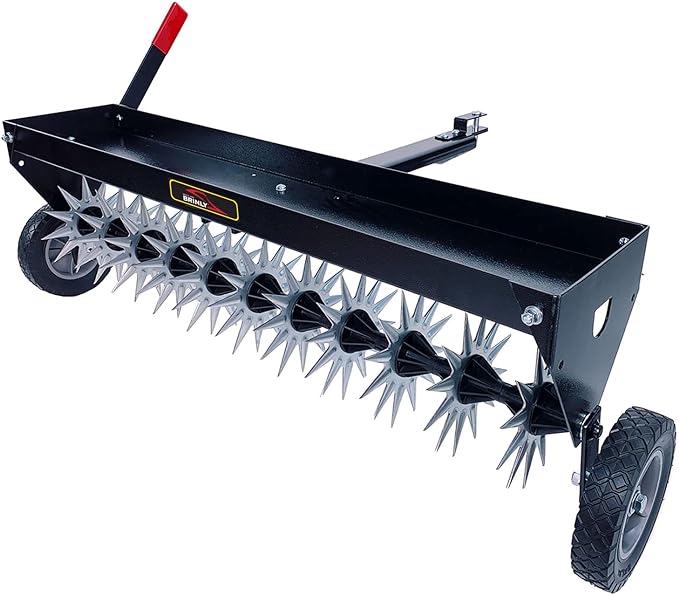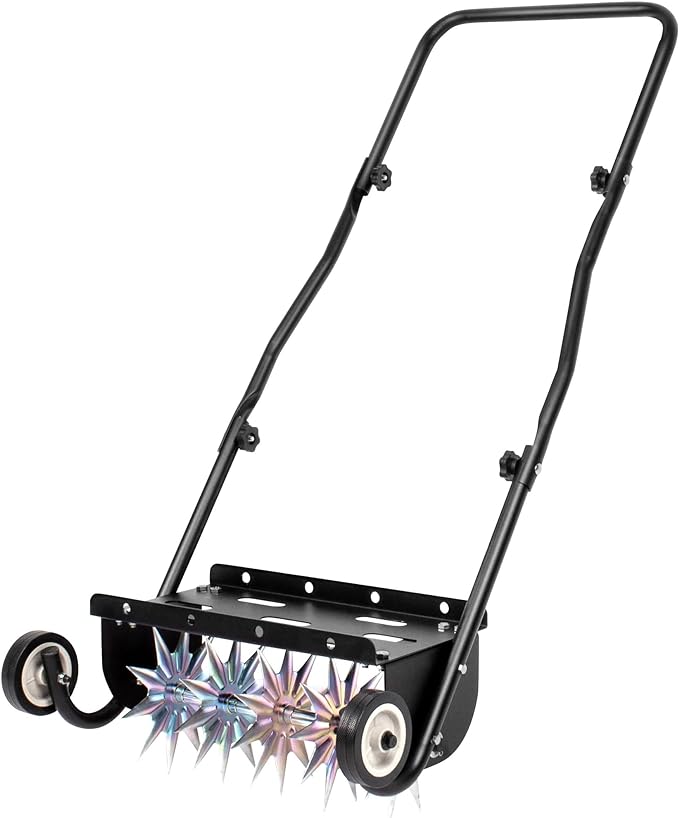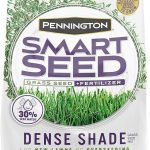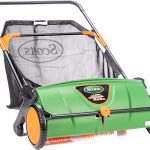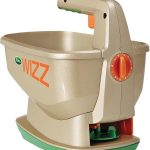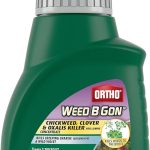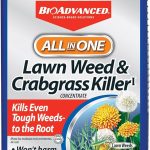Let’s say you’ve recently moved into a new home with a lawn that’s been neglected for years. The grass is compacted, and you know it needs some serious TLC. You’ve heard that lawn aeration can work wonders, but you’re not sure where to start. With so many options available, choosing the right lawn aerator for your specific needs can be overwhelming. From tow-behind aerators to manual spike aerators, there are a range of solutions out there. But which ones are the most effective, and which ones are worth your investment?
Contents
- Agri-Fab 45-0518 40 Tow Plug Aerator,black
- Yard Butler Manual Lawn Coring Aerator
- Gardzen Hand Hollow Tine Lawn Aerator
- Lawn Aerator Shoes for Grass
- Walensee Lawn Aerator Spike Manual Dethatching Soil
- Brinly Spike Aerator
- 18-Inch Push Spike Aerator for Lawn Aeration
- Factors to Consider When Choosing Lawn Aerators
- Frequently Asked Questions
- Conclusion
Agri-Fab 45-0518 40 Tow Plug Aerator,black
If you’re a homeowner with a compacted lawn seeking to improve soil health and promote vigorous grass growth, the Agri-Fab 45-0518 40 Tow Plug Aerator is an excellent choice, featuring a 40-inch wide working width and 24 galvanized and sharpened plug coring knives.
With its 10 x 3 pneumatic tires, you can transport it smoothly, and the single lever transport handle folds for convenient storage.
Made in the USA, this aerator is built to last, backed by a 3-year limited warranty.
You’ll appreciate its ability to remove soil plugs, allowing air, water, and nutrients to reach grass roots, promoting healthy growth.
Best For: Homeowners with compacted lawns seeking to improve soil health and promote vigorous grass growth.
Pros:
- Removes soil plugs, allowing air, water, and nutrients to reach grass roots, promoting healthy growth
- Features a 40-inch wide working width and 24 galvanized and sharpened plug coring knives for effective aeration
- Made in the USA and backed by a 3-year limited warranty for durability and reliability
Cons:
- Assembly can be lengthy (2-3 hours) and requires patience
- Instructions can be confusing, with some steps unclear
- Some users experienced issues with bolt lengths and wheel assembly
Yard Butler Manual Lawn Coring Aerator
Those seeking a tool that can revitalize their lawn by promoting vigorous root growth and reducing water runoff will find the Yard Butler Manual Lawn Coring Aerator to be an excellent choice.
This high-performance tool is built to last with durable steel construction and a powder-coated finish for rust resistance.
You’ll appreciate the cushioned handles that provide a comfortable grip, making it easy to use without straining your back.
The 37-inch aerator also features a foot bar for extra leverage, allowing you to remove 3-1/2 inch cores and promote healthy root growth.
With over 8,600 customer reviews and a 4.3-star rating, you can trust that this aerator will deliver results.
Best For: Those with small to medium-sized lawns who want to improve their lawn’s health and reduce water runoff.
Pros:
- Effective in revitalizing old lawns and promoting healthy root growth
- Durable steel construction with a powder-coated finish for rust resistance
- Easy to use, even for those with physical limitations, with a comfortable grip and foot bar for extra leverage
Cons:
- Can be physically demanding to use, especially on dry, hard soil
- May clog if used on dry soil, requiring more effort to penetrate the ground
- Requires lawn to be watered before use to soften the soil and reduce compaction
Gardzen Hand Hollow Tine Lawn Aerator
With compacted soils and small lawns in mind, the Gardzen Hand Hollow Tine Lawn Aerator stands out as a top choice for homeowners seeking a cost-effective and easy-to-use solution.
You’ll appreciate its heavy-duty steel frame with a black powder-coated finish, designed to withstand regular use.
This plug aerator uses hollow tines to remove plugs of soil, leaving small gaps that improve soil drainage and airflow.
You’ll find it’s simple to use, even for those with small lawns or problem areas in larger lawns.
With a 4.1-star rating from over 1,000 customers, you can trust that this aerator will get the job done.
Just remember to use it on wet soil for easier aeration and avoid rocky areas to prevent clogging.
Best For: Homeowners with small lawns or problem areas in larger lawns seeking a cost-effective and easy-to-use lawn aerator.
Pros:
- Easy to use and effective for aerating lawns, especially for compacted soils
- Sturdy and durable with a heavy-duty steel frame and black powder-coated finish
- Cost-effective and simple to maintain
Cons:
- May experience clogging issues, especially in rocky areas
- Requires regular cleaning to prevent clogging
- Not suitable for large areas or heavy-duty use
Lawn Aerator Shoes for Grass
You’ll find the Lawn Aerator Shoes for Grass to be the best choice for anyone seeking a convenient and efficient way to aerate their lawn, especially if you have a smaller yard and prefer to get the job done quickly while saving your back from heavy machinery.
These shoes are designed with adjustable Velcro straps to fit women’s shoe sizes 6-10 and men’s shoe sizes 6-9.
Made from durable aluminum alloy and plastic soles, they provide comfort and support while you work.
The heavy-duty spikes have a 675Mpa yield strength, making it easy to aerate your lawn.
With no installation required, you can simply slip them on over your tennis shoes and get started.
Best For: Lawn owners with smaller yards who want a convenient and efficient way to aerate their lawn without heavy machinery.
Pros:
- Adjustable Velcro straps fit a range of shoe sizes for comfort and ease of use
- Heavy-duty spikes with high yield strength make aeration easy and efficient
- No installation required, simply slip them on over tennis shoes and start aerating
Cons:
- Limited to smaller yards, may not be suitable for larger lawns
- Requires walking on the lawn, may not be suitable for people with mobility issues
- No specific warranty duration mentioned, may be a concern for some users
Walensee Lawn Aerator Spike Manual Dethatching Soil
If you’re seeking a reliable and efficient lawn aerator for small to medium-sized lawns, the Walensee Lawn Aerator Spike Manual Dethatching Soil is an excellent choice, thanks to its 15 sharp iron spikes that effectively loosen soil and thatch.
You’ll appreciate the durable iron construction with a powder-coated finish that resists rust, making it a great investment for your lawn care.
The cushion-designed T-handle and foot bar provide comfort during use, and the compact design allows for easy carrying and storage.
By using this aerator, you’ll promote healthy lawn growth, improve air, water, and fertilizer penetration, and revive your lawn’s health.
With its pre-assembled design and easy maintenance, you’ll be enjoying a lush, thriving lawn in no time.
Best For: Small to medium-sized lawn owners seeking a reliable and efficient lawn aerator for promoting healthy lawn growth and reviving lawn health.
Pros:
- Effective lawn aeration with 15 sharp iron spikes for loosening soil and thatch
- Durable iron construction with powder-coated finish for rust-resistance and long-lasting use
- Compact design with cushion-designed T-handle and foot bar for comfortable use and easy carrying and storage
Cons:
- May have limitations for larger areas or hard soil
- Requires pre-watering of lawn for best results in hard and dry soil
- May require minimal effort and maintenance for optimal performance
Brinly Spike Aerator
For homeowners seeking to relieve compacted soil and promote healthy lawn growth, the Brinly Spike Aerator is an excellent choice, thanks to its ability to penetrate soil up to 2 inches deep with its 11 tine stars featuring 12 spike tips.
You’ll appreciate the extra-wide tow bar and galvanized steel 3D tines, which provide durability and maximum soil penetration.
The weight tray can hold up to 150 pounds of extra weight for even deeper penetration.
With a transport mode and single-lever engagement, you can easily cross driveways and sidewalks.
This aerator has received 4.3 out of 5 stars from 84 customers, praising its ease of assembly, durability, and effectiveness in aerating soil.
Best For: Homeowners seeking to relieve compacted soil and promote healthy lawn growth.
Pros:
- Easy to assemble and use
- Durable and effective in aerating soil, with the ability to penetrate up to 2 inches deep
- Features transport wheels and a single-lever engagement for easy crossing of driveways and sidewalks
Cons:
- Some customers have issues with the design of the holes for straps and the bolts holding the tow bar
- No specific warranty information is provided
- The product is relatively heavy, weighing 42.1 pounds
18-Inch Push Spike Aerator for Lawn Aeration
Those seeking a reliable and efficient lawn aerator for small to medium-sized lawns will appreciate the 18-Inch Push Spike Aerator, which boasts a sturdy alloy steel construction and 5-star shaped spikes for effective soil penetration.
You’ll find it easy to assemble, thanks to the detailed instructions, and its durable construction with a powder-coat finish will guarantee it’ll last long and resist rust.
With its solid and flexible plastic rollers, you can effortlessly roll it on any turf.
Although it requires some effort to use, especially on larger lawns, you can enhance its performance by adding weights and using it on saturated ground.
With a 3.8-star rating from 249 customers, you can trust its effectiveness in aerating your lawn.
Best For: Those with small to medium-sized lawns seeking a reliable and efficient lawn aerator for effective soil penetration.
Pros:
- Easy to assemble with detailed instructions
- Durable construction with powder-coat finish for long life and rust prevention
- Effective in aerating lawns with 5-star shaped spikes and solid, flexible plastic rollers
Cons:
- Requires some effort to use, especially on larger lawns
- May be difficult to use for those with health issues
- May require adding weights to increase soil penetration
Factors to Consider When Choosing Lawn Aerators
When choosing a lawn aerator, you’ll want to guarantee several key factors to get the right one for your lawn.
You’ll need to think about the type of aerator that’s best for your lawn, as well as its size and weight, given the size of your lawn and the soil type.
Lawn Aerator Types
You’re faced with a multitude of lawn aerator types, and selecting the right one depends on your specific lawn care needs and preferences.
There are two main types of lawn aerators: spike aerators, which use spikes or tines to puncture the soil, and plug aerators, which remove small plugs of soil to improve airflow and reduce soil compaction.
If you have a small to medium-sized lawn, a manual aerator might be the way to go. They’re cost-effective, eco-friendly, and great exercise for you! However, be prepared to put in some physical effort.
If you have a larger lawn, a tow-behind aerator attached to a lawn tractor or ATV might be more suitable.
For smaller to medium-sized lawns, push aerators are a popular choice, offering convenience and ease of use.
And if you’re looking for a unique solution, there are even specialized aerators like spike sandals or shoes that let you aerate your lawn just by walking on it.
With so many options, bear in mind your lawn’s specific needs and your personal preferences when choosing the right aerator for you.
Aerator Size Matters
How much ground can you realistically cover with your lawn aerator, and what’re the trade-offs between size, maneuverability, and efficiency?
When choosing an aerator, you’ll need to weigh the size of your lawn, the terrain, and the available storage space. A larger aerator size typically covers more ground and saves time, but may be heavier and more difficult to maneuver, especially for smaller lawns or those with tight spaces.
Aerator sizes usually range from 12 to 48 inches in width, with larger sizes requiring more power and traction to operate effectively.
If you have a smaller lawn or limited storage capacity, a compact aerator with a smaller width (around 12-18 inches) might be ideal. On the other hand, if you have a larger lawn, a wider aerator (24-48 inches) can cover more ground in less time, but may require more power and traction.
Soil Type Considerations
Two key factors when choosing a lawn aerator are the type of soil you have and the specific aeration needs it requires, which must be taken into account.
If you have clay soil, you’ll need a lawn aerator with longer tines to penetrate deeper into the soil. On the other hand, if you have sandy soil, shorter tines will suffice to avoid damaging the soil structure.
If your lawn has heavy clay or compacted soil, you may need a more aggressive aeration approach, such as using a spike aerator with longer tines or a plug aerator that removes plugs of soil. Conversely, if your soil is sandy or well-draining, a manual or tow-behind aerator with shorter tines may be sufficient.
Additionally, consider the type of grass you have and its growth habits, as some grasses are more sensitive to aeration than others.
Furthermore, take into account the concentration of thatch or organic matter in your soil, as this may require a specific type of aerator, such as a dethatching aerator or a gentle aeration approach.
Weight and Durability
When choosing a lawn aerator, consider the weight and durability of the product, as these factors substantially impact its performance and lifespan.
You’ll find that heavier models typically provide better soil penetration, but may require more effort to maneuver. On the other hand, lighter models are easier to handle, but mightn’t be as effective.
The weight of a lawn aerator can range from under 1 pound for manual spike aerators to over 40 pounds for tow-behind models.
Durability is also essential, and you should look for products with powder-coated steel or aluminum alloy frames that resist rust and corrosion.
Even weight distribution is also important, as it helps maintain traction and prevents the aerator from getting stuck in the soil.
Additionally, consider how the weight and durability of the aerator will impact its storage and transportation. Lighter and more compact models are easier to store and transport, but may sacrifice effectiveness and durability.
Ease of Use Factor
Your ease of use experience largely depends on the aerator’s design and features, which can substantially impact the effectiveness of your lawn care routine.
You want an aerator that’s easy to maneuver, allowing you to cover more ground quickly and efficiently. Look for models with adjustable handlebars, which can be customized to fit your height and comfort level.
This feature is especially important if you plan to use the aerator for extended periods.
Additionally, consider the aerator’s weight distribution and balance. You don’t want an aerator that’s too heavy or cumbersome, making it difficult to push or tow.
A well-balanced design will reduce fatigue and make the aeration process less strenuous. Some aerators also come with features like foldable or removable handles, making storage and transportation a breeze.
Aeration Depth Control
You’ll want to think about the aeration depth control of your lawn aerator, as it plays a crucial role in effectively loosening soil and promoting healthy lawn growth.
The ideal aeration depth ranges from 2-6 inches, depending on your soil type and lawn condition.
Manual lawn aerators typically offer limited depth control, relying on your effort and soil conditions to determine the aeration depth.
On the other hand, tow-behind aerators often feature adjustable tine depth settings for more precise control.
When choosing a lawn aerator, consider the soil type and condition, as well as the desired aeration depth, to guarantee the selected product is capable of achieving the desired results.
Deeper aeration (4-6 inches) is more effective at reducing soil compaction and promoting root growth, while shallower aeration (2-3 inches) is better suited for maintenance and lawn preparation.
Remember, regular aeration, regardless of depth, is essential for maintaining a healthy lawn.
Tine Material Importance
Selecting the right tine material is essential to getting the most out of your lawn aerator, as it directly impacts the tool’s performance, durability, and overall effectiveness in loosening soil and promoting healthy lawn growth.
When choosing a lawn aerator, you’ll likely come across tines made from high-carbon steel, aluminum alloy, or galvanized steel. These materials are popular for their strength and rust resistance, ensuring your aerator can withstand heavy use and harsh weather conditions.
The thickness and shape of the tines also matter. Thicker tines provide more aggressive aeration, while thinner tines are better suited for lighter soil penetration.
Additionally, consider the spacing and pattern of the tines, as this affects the aerator’s ability to penetrate the soil and relieve compaction. Closer tine spacing provides more thorough aeration.
Finally, keep in mind that the tine material can impact the aerator’s weight and maneuverability. Lighter materials make the tool easier to handle and transport.
Budget and Value
How much are you willing to invest in a lawn aerator, considering that prices can vary greatly depending on the type and features of the tool? You’ll find that manual spike aerators can start as low as $20, while tow-behind aerators can cost over $100. You must set a budget and prioritize features accordingly.
Remember, a higher-priced aerator doesn’t always mean better value. Some manual aerators can provide similar results at a lower cost. When evaluating the cost, consider the long-term benefits of regular aeration, which can reduce the need for fertilizers, pesticides, and other lawn care products.
The durability and construction of an aerator also impact its value. High-quality materials and construction may justify a higher upfront cost. Additionally, look for manufacturers that offer an exhaustive warranty and reliable customer support, which can provide peace of mind and protect your investment. By weighing the cost against the benefits, you can find an aerator that fits your budget and meets your lawn’s needs.
Frequently Asked Questions
Can I Use a Lawn Aerator on Newly Seeded Lawns?
When you’ve just seeded your lawn, wait until the new grass is about 3-4 inches tall before aerating, as you don’t want to disrupt the seedlings or compact the soil too much; this precaution allows.
How Often Should I Aerate My Lawn in a Year?
You should aerate your lawn at least once a year, ideally in the fall when the soil is soft, but if you have heavy clay or compacted soil, you might need to do it twice.
Can I Use a Lawn Aerator on Steep Slopes or Hills?
When tackling steep slopes or hills, you’ll want to exercise caution, as most lawn aerators aren’t designed for extreme inclines; consider renting a specialized slope aerator or consulting a pro to avoid accidents.
Are Lawn Aerators Suitable for All Types of Grass?
Did you know that 75% of homeowners prioritize lawn care? When it comes to your lawn, you’re wondering if lawn aerators suit all grass types. Generally, yes, they do, but you must choose an aerator suitable for your specific grass type, whether it’s cool-season, warm-season, or a mix.
Do Lawn Aerators Damage Underground Sprinkler Systems?
When you aerate your lawn, you’re likely wondering if you’ll damage those underground sprinkler systems. The good news is that, typically, lawn aerators won’t harm them, but you should still exercise caution to avoid any potential damage.
Conclusion
You’ve got the whole picture now, and it’s time to take the bull by the horns!
With the 7 best lawn aerators in your toolkit, you’re ready to tackle even the most compacted lawns.
Remember, a well-aerated lawn is just a step away from a lush, green haven.
So, don’t beat around the bush – get aerating and give your lawn the TLC it deserves!
